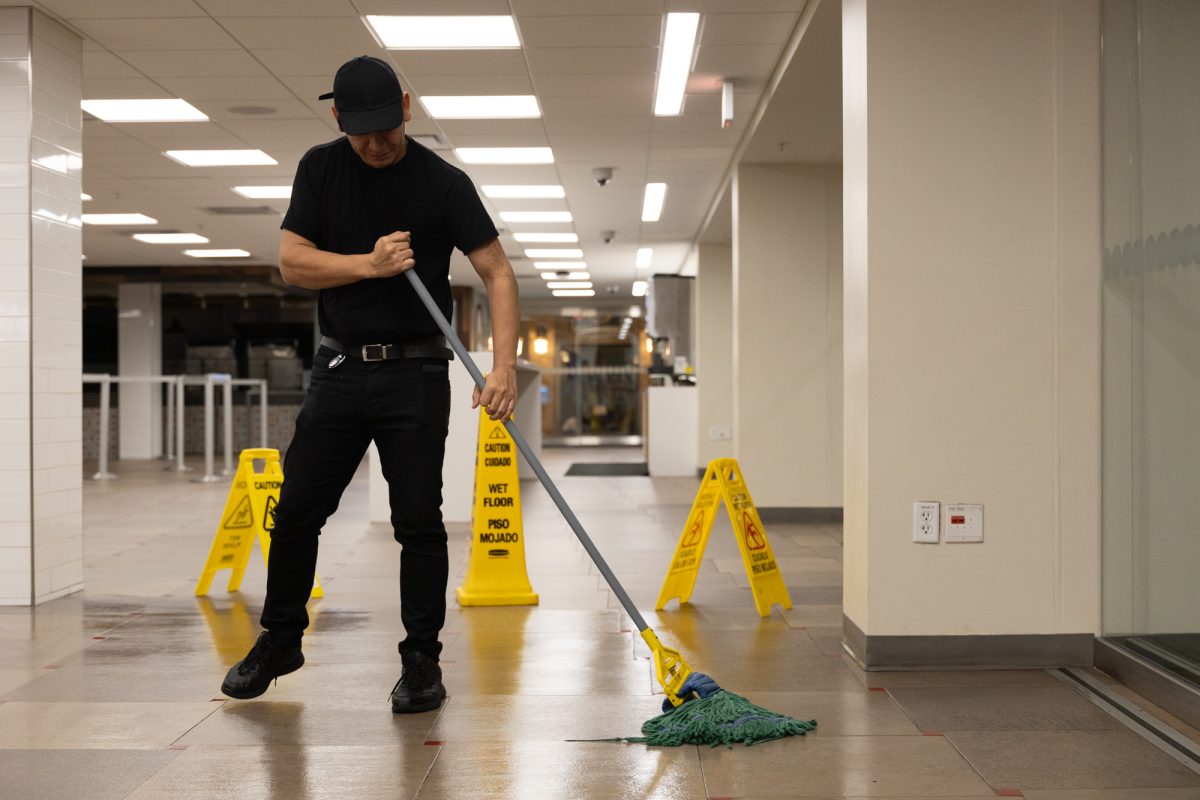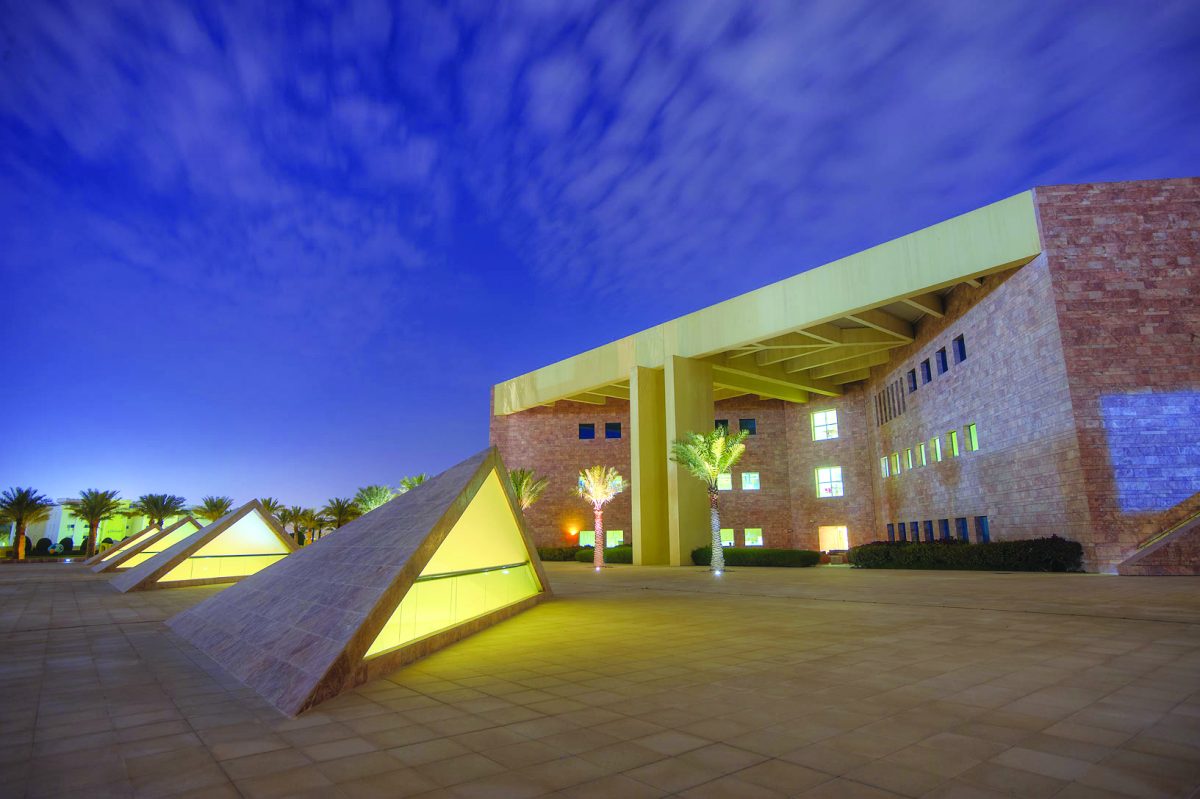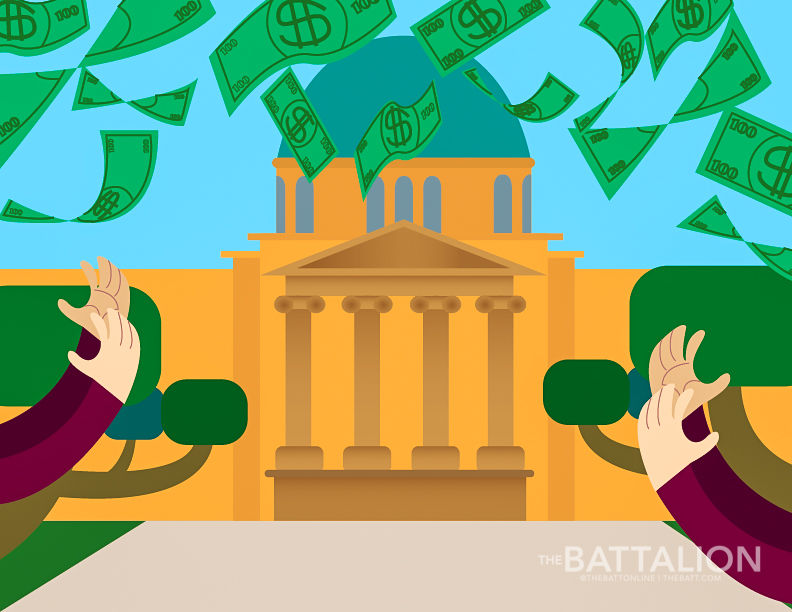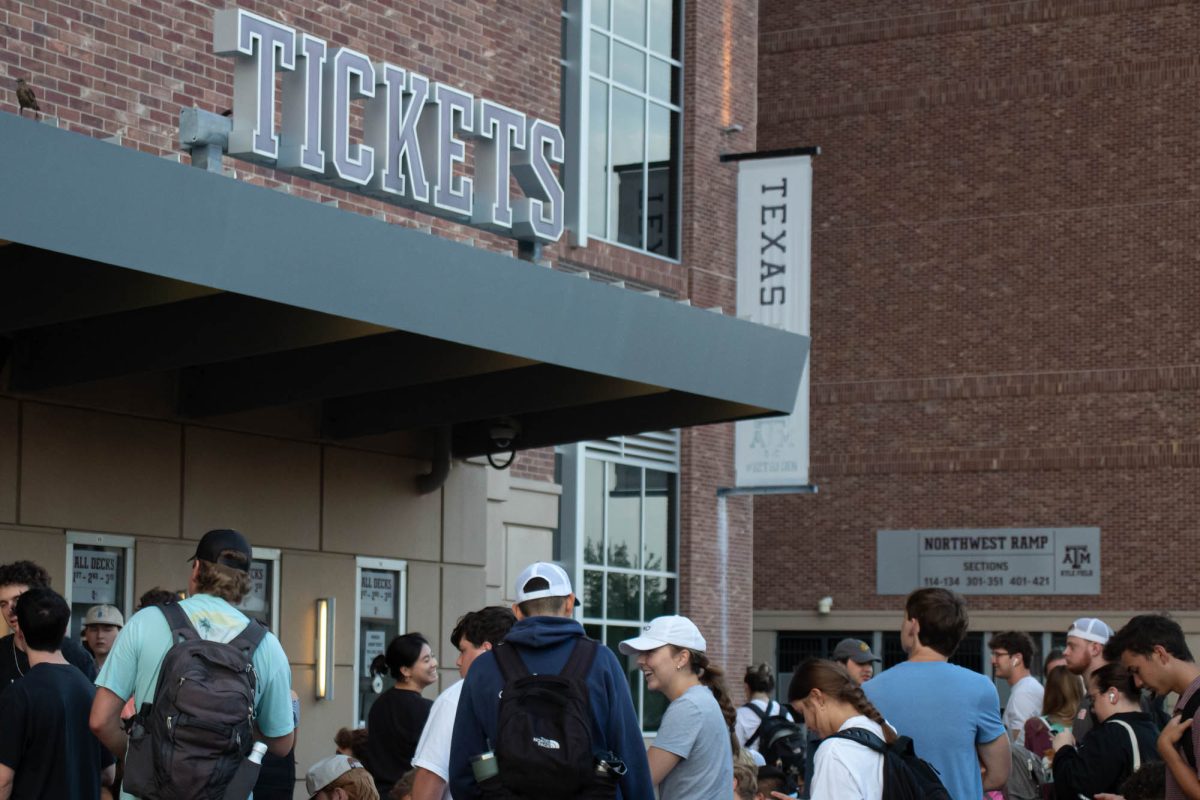The room is, in essence, controlled chaos. Groans and yells of a woman in labor echo from one side and a nurse calls a Code Blue from the other, setting another five people into action. Disaster Day is in full swing.
Disaster Day, organized by the Texas A&M College of Nursing, completed its seventh annual event Thursday. The day, planned and largely coordinated by students, simulates a large-scale disaster and includes student participants from EMS, radiology, physical therapy, the Blinn nursing program, the College of Pharmacy and the College of Medicine. This year was the largest event so far, with 276 students from medical programs participating and more than 500 volunteers from the community acting as injured patients.
Nancy Dickey, former president of the Texas A&M Health Science Center, first brought up the idea of Disaster Day in 2009. She said in a real world situation, these students would be filling a leadership role as well as a medical one.
“Health care professionals have a high likelihood of not only being called upon to respond to unplanned emergencies, but are often times looked at to be the planners and the leaders,” Dickey said. “I think this is an invaluable part of our students’ curriculum.”
This year’s simulated disaster was a hurricane that hit the coast and resulted in several tornadoes, including one that went through Bryan-College Station.
A step removed from the chaos was Ellyse Lamont, faculty advisor for Blinn nursing students. Her role in Disaster Day was to support the students as they decided how to prioritize patients based on the severity of wounds.
“Disaster can happen in any town, in any community, at any time, and if [the students] are comfortable in triaging and learning how to treat patients in this kind of a setting somewhat or at least been exposed to it, God forbid if disaster does happen, they’ll be more likely to volunteer and go out and help,” Lamont said.
Mary Alice Middlebrooks, assistant professor in the college of nursing, also acted as a faculty advisor during the simulation.
“From one perspective, what I’m looking for is, ‘Did the students diagnose and treat each patient appropriately?'” Middlebrooks said. “We don’t just look at utilization of skills but also the ability of students to think out of the box. In situations like this, resources are limited.”
Lamont said prioritization is key as new situations are constantly added.
“It’s easy to want to take care of the loud patients early when they’re hollering in pain and forget the quiet one that’s slowly dying and may actually need more attention,” Lamont said.
Klya Jo Gresham, junior nursing student, experienced her first Disaster Day Thursday and said the initial moments came as a shock.
“It was pretty real for a moment,” Gresham said. “We were a little nervous, it was an anxiety between being nervous and excited of not knowing, everybody was trying to guess. ‘What could it be? What happened?’ You walk into the room and there are people who are bloody and on cots and it takes you back for a moment.”
The hurricane angle was relevant, Gresham said, because hurricanes have pushed evacuees to College Station before and could again. The simulation presented as realistic of a situation as possible and Gresham said issues created by limited resources did occur.
“A lot of things we saw we could see [in the real world],” Gresham said. “We had to deal with shortages. There weren’t enough gloves or enough blood pressure cuffs to go around. Things you need to take vital signs. We needed to do a chest tube, and we didn’t have any suction for a test tube. So we had to Macgyver this tube. We cut the finger of a glove off and taped it on the end of the chest tube in order to have suction of some kind. It was really cool to see though.”
There are two hour and half simulation sessions, one in the morning and one in the afternoon. When the simulation begins, patients immediately begin to act their roles, sporting make-up injuries and groaning in pain.
Nurses and doctors immediately sprang into action, nurses went from patient to patient checking vital signs and trying to distinguish which patients were suffering from more severe injuries. As IVs were set up and wounds were wrapped, some patient situations began to change as some stop breathing and one woman went into labor. More and more patients were brought in as the simulation progressed.
Randy Holdgrat, fourth year medical student and second year participant in Disaster Day, simply described the situation as “chaos.”
“They hit a bullhorn, said start and all of a sudden the patients who are sitting comfortably on their beds start screaming and crying,” Holdgrat said. “It’s chaos. I told the medical students before we started, ‘In these situations, when everything starts getting crazy, first thing you do is check your own pulse.’ You calm down, relax and go and try and do the best you can.”
Another goal of the program is to teach students how to work with other professions in the medical field. Gresham said Disaster Day is the first time for many students to interact with someone from another discipline.
“It’s the first time that all of us have been thrown into one situation together,” Gresham said. “We had Texas A&M nursing students, Blinn nursing students, Texas A&M med students, pharmacology, radiology, PT, the whole shebang. Everyone’s together.”
Gresham said being forced to work with others highlighted how vital communication is.
“I wish we did more things where we are all together because it gives us a concept of how to work together and how to make that flow,” Gresham said. “Without that communication, that’s where you see a lot of your medical errors.”
Disaster Day
March 19, 2014
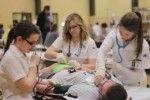
0
Donate to The Battalion
Your donation will support the student journalists of Texas A&M University - College Station. Your contribution will allow us to purchase equipment and cover our annual website hosting costs.
More to Discover



